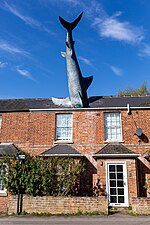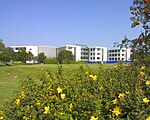Nuffield Orthopaedic Centre
1872 establishments in EnglandHospitals established in 1872Hospitals in OxfordNHS hospitals in EnglandSpecialist hospitals in England ... and 1 more
Use British English from January 2015

The Nuffield Orthopaedic Centre (NOC) is an orthopaedic hospital, with strong affiliations to the University of Oxford. It provides routine and specialist orthopaedic surgery, plastic surgery and rheumatology services to the people of Oxfordshire. Specialist services, such as the treatment of osteomyelitis and bone tumours, and the rehabilitation of those with limb amputation, congenital deficiency and neurological disabilities, are provided for patients from across the UK and abroad. It is managed by the Oxford University Hospitals NHS Foundation Trust.
Excerpt from the Wikipedia article Nuffield Orthopaedic Centre (License: CC BY-SA 3.0, Authors, Images).Nuffield Orthopaedic Centre
Windmill Road, Oxford Headington
Geographical coordinates (GPS) Address External links Nearby Places Show on map
Geographical coordinates (GPS)
| Latitude | Longitude |
|---|---|
| N 51.754722222222 ° | E -1.2094444444444 ° |
Address
Nuffield Orthopaedic Centre
Windmill Road
OX3 7DN Oxford, Headington
England, United Kingdom
Open on Google Maps








